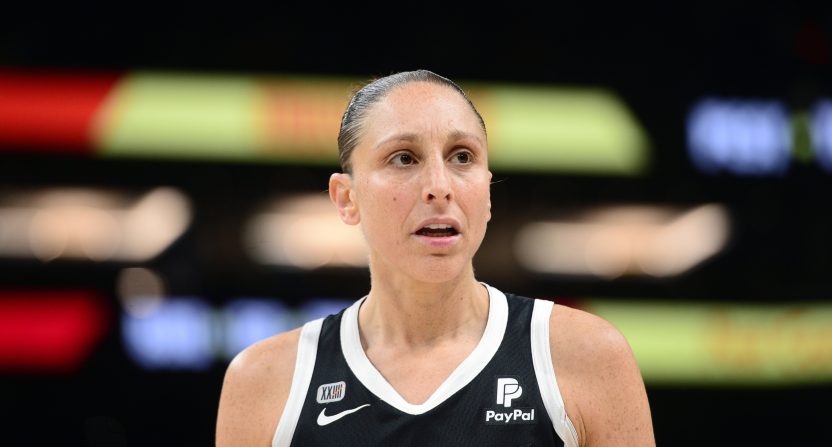If recent TV ratings have been any indication, it feels like more people are watching women’s basketball than ever before.
9.9 million viewers watched LSU beat Iowa in the most recent NCAA Women’s National Championship (and the Final Four numbers weren’t too shabby either). Meanwhile, 683,000 viewers tuned in to watch Brittney Griner’s return to the WNBA, the league’s most-watched regular season game since 1999.
With the WNBA signing new media deals and the NCAA Women’s Tournament potentially getting unbundled when the media rights become available, it feels like we’re entering a new era where women’s basketball has the opportunity to stand on its own, separate from the men’s game.
That’s something Phoenix Mercury star Diana Taurasi is hoping to see. The 40-year-old recently spoke about a specific way in which those who cover the sport can start to create that separation.
I thought Diana Taurasi gave a really interesting answer today about broadcasters making comparisons when it comes to women's college basketball and WNBA players. Something to think about. pic.twitter.com/zqvE4wYLKa
— Richard Deitsch (@richarddeitsch) June 1, 2023
“I think we have established a league of amazing players not only [currently] in the WNBA but going way back before that,” said Taurasi, via Richard Deitsch. “It’s funny. I hear on broadcasts whenever I do watch a WNBA or college game, ‘Hey, Caitlin Clark is like Stephen Curry.’ Well, why can’t she be like Katie Smith, you know?”
“‘Angel Reese? Boy, she rebounds like Dennis Rodman.’ Well why can’t she be like Rebekkah Brunson? I think it’s just a lack of education and research, really.”
Iowa’s Caitlyn Clark was compared to NBA star Steph Curry in various forms during her March Madness run.
Not everyone did that, of course. Taurasi probably appreciated the way ESPN’s Holly Rowe referred to Clark during the tournament.
My favorite quote on Caitlin Clark so far is from @sportsiren:
"If Sue Bird and Diana Taurasi had a baby, it's Caitlin Clark."
— Richard Deitsch (@richarddeitsch) April 2, 2023
The Georgetown Voice’s Ethan Johnson echoed a similar sentiment in April, noting other instances when male players were used as benchmarks to describe female players.
Connecticut Sun forward Alyssa Thomas drew comparisons as a college prospect to LeBron James for her athleticism and versatility. Triple-double outputs in college earned Sabrina Ionescu comparisons to Russell Westbrook. Las Vegas Aces guard Kelsey Plum was dubbed “the James Harden of women’s hoops” for her left-handed craftiness.
You can understand why Taurasi would want to see fewer comparisons to the men’s stars. The WNBA has been fighting a perception that it’s a lesser version of the NBA since its inception. And comparisons between the two, fair or not, invariably reinforce that notion. The idea that you need to understand a WNBA or women’s college basketball player through the context of a men’s basketball player’s success isn’t ideal or fair.
On the flip side, some would say that casual or new viewers of women’s basketball might appreciate the context, especially if they’re trying to figure out who is who. But there are certainly other ways of doing that as well.
It’s a delicate line for broadcasters to walk when it comes to speaking to their audience. The best way forward is likely to have people in the booth who have lived and breathed the women’s game so much that they know it fundamentally. That’s something that some outlets and networks seem to be taking seriously in their coverage, though there continues to be plenty of room for improvement.







